Is the resolution of your 360 camera important? Surely yes even if this is not the only parameter to take into account. And what is the resolution level of current 360 cameras to get cropped images in standard format. In this article, I’ll answer these questions with concrete examples.
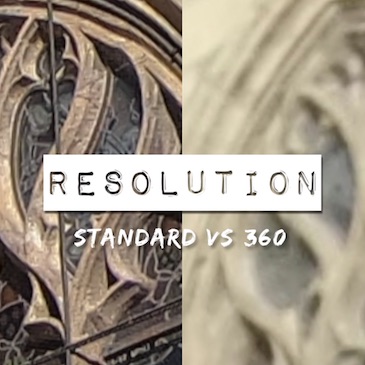
QUESTION FOR A RESOLUTION
What is the main characteristic of a digital camera? If you ask this question around you, in the vast majority of cases, you will get the answer: the resolution, the number of pixels. Even if the most informed will also point out the importance of other characteristics such as the management of contrasts, color or sensitivity in low light, it is nonetheless true that resolution is a key element in the reproduction. details. If the resolution is low compared to the size of the image representation, it will appear blurry and slightly sharp. And if the resolution is high, you are more likely to reproduce the details of the scene being photographed.
All of this logically remains applicable to 360-degree images. It will be easily understood, as all the directions are captured without prejudging the portions of the image which could be the most interesting, the 360 cameras require a very high resolution to be compared to the standard cameras with smaller field angles.
My purpose here is not to embark on a theoretical analysis of the really necessary resolution, since it depends on many factors and in particular on the use of each one. Also, I will focus on the visual comparison of several images captured alternately with a 4K action camera and with a consumer 360 camera (around 6K), then cropped to the usual format at different resolutions.
This will simulate the application of a zoom (with equivalent focal lengths between 28mm and 100mm). Remember also that this is a use case of 360 cameras, indeed the capture in all directions associated with a high resolution, will eventually allow you to navigate in a place – after the capture – in all directions and visually approach points of interest.
Let’s take a first example of a church photo. The top band contains the images from the 4K capture with successive cropping to simulate the focal length indicated. The bottom strip contains the images from the 360 camera.
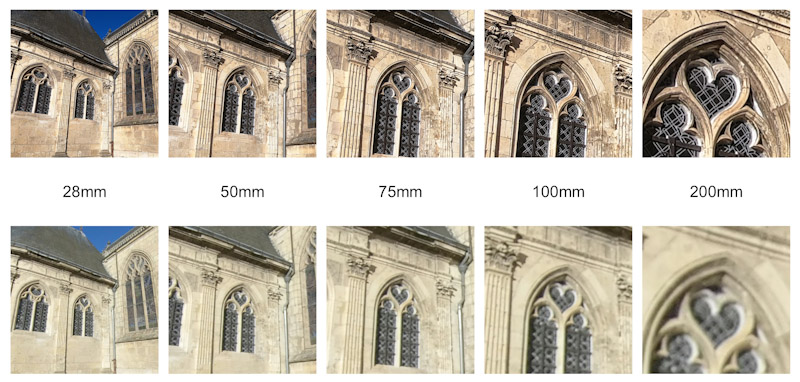
For this second example, I chose this rather impressive scaffolding, which makes it possible to distinguish the rendering of the details. Identical to the previous example, top strip for 4K camera and bottom strip for 360 camera.
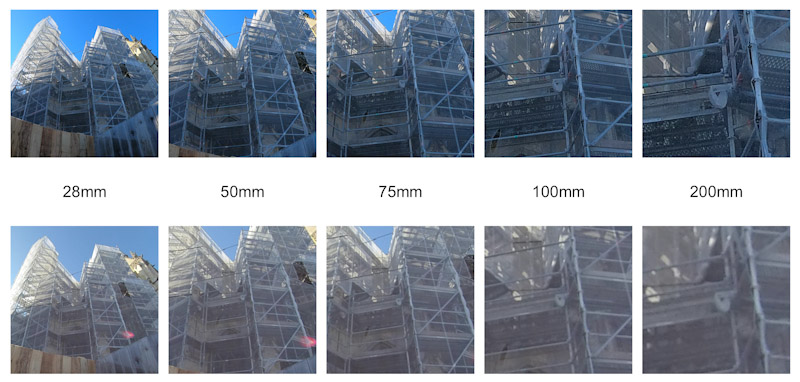
Below are several comparisons of images, with different angles of view, which visually illustrate the effect of resolution on 360-degree images. In all cases, the image on the left is from the 4K camera and the image on the right is from the 360 camera.
28mm equivalent focal length:
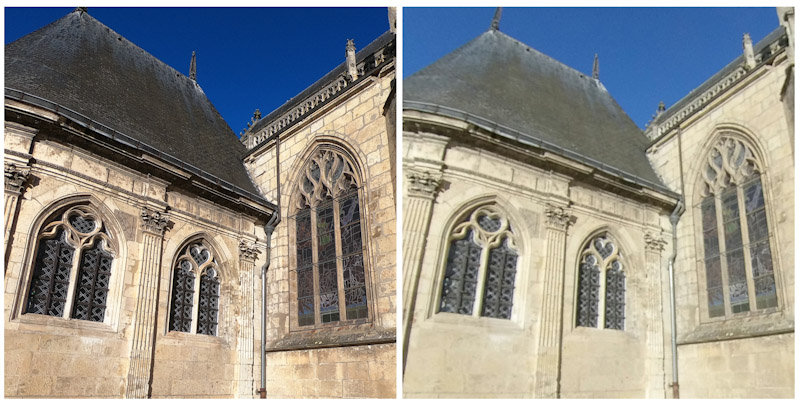
75mm equivalent focal length:
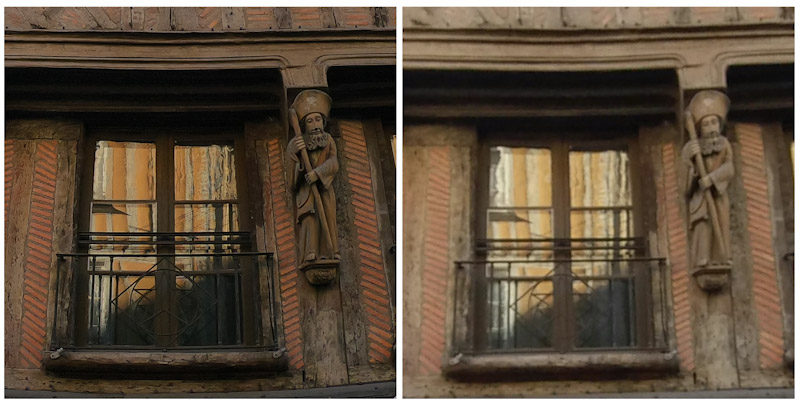
100mm equivalent focal length:
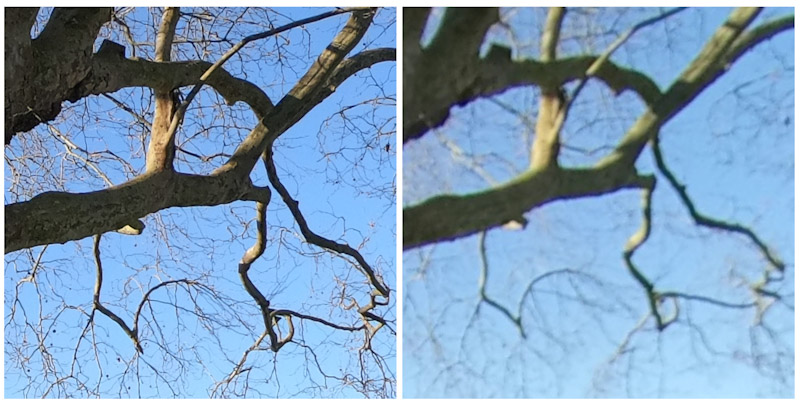
200m equivalent focal length:
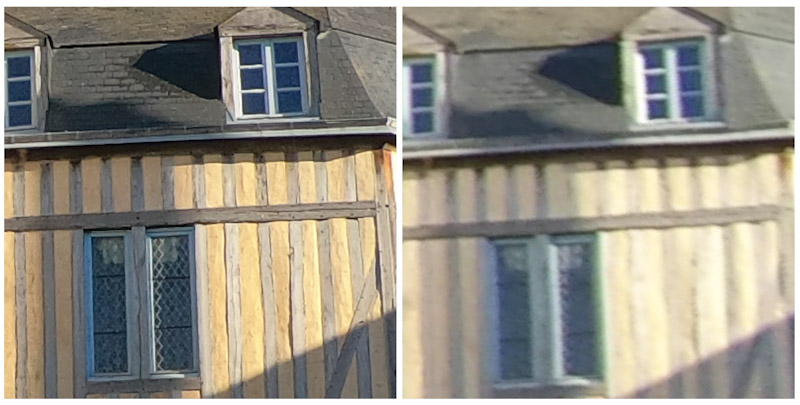
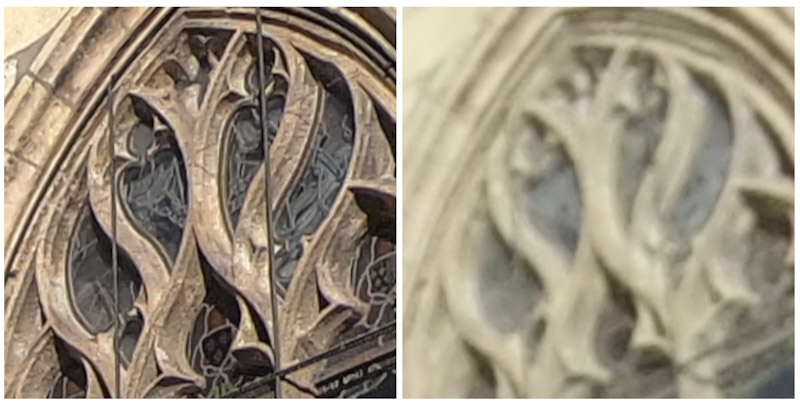
TO CONCLUDE
Indeed, I often hear that the resolution of today’s 360 cameras is sufficient and that there is no need to improve it. Take a look at the implications of this increased resolution. Even beyond the quality of the images, this would result in larger files and therefore requiring more storage space as well as greater processing capacities so as not to reduce the ergonomics of the handling of these media by users.
On the other hand, it does bring the possibility of really exploiting the new dimension brought by perception at 360. For use in cropping, we can not only apply camera movements but above all also variations in focal length / zoom.
In the extreme, we might think that a 360 image with a very high resolution would be the complete snapshot of a moment of life. This would allow you to find all the details there, including those that you might not have seen at the time of the shooting.
I think this great freedom of camera movement and focal length variation is a real plus. There is little doubt that this increase in resolution is part of the future of 360 cameras. Moreover, this is what we have observed for traditional cameras, the resolution has been increasing (we have moreover referred to as pixel race ) and then stabilize relatively at a level compatible with the resolution of our view. This stage is not yet reached in 360 and we can bet that it will improve gradually over the years.
NOTES:
- As the purpose of the article is not to compare camera brands, I have deliberately decided not to cite the cameras used in the examples.
- Even if the technical parameter studied here is the resolution of the camera, I chose to express the levels of cropping in equivalent focal length, which must be explicit for the amateurs of photography, rather than the number of pixels.
